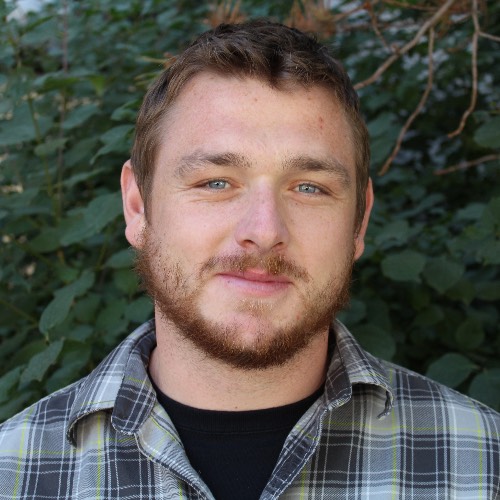About Me
I am currently a Visiting Assistant Professor at University of California, Merced. I graduated with my PhD in Mathematics from the University of Utah, under the advisement of Christel Hohenegger, in May 2022. My research focuses on fluid dynamics and utilizes numerical approximations, asymptotic analysis, and applied analysis.
I am interested in computational and machine learning problems arising from fluid dynamics. My ongoing research includes evaluating high spots of the displacement of the fundamental free surface in a linear sloshing model while including surface tension, the steady streaming phenomenon in both Newtonian and non-Newtonian fluids, and colliding turbidity currents in one and two horizontal dimensions motivated from deep-sea mining.
Teaching
As a graduate student, I taught Calculus 1 for my first course as the instructor on record in Summer 2017. Since then, between my time at the University of Utah and UC Merced, I have taught a total of twelve different sections across six distinct courses. These six courses include both upper and lower division undergraduate math courses with class sizes ranging from 20 to 200 students. In the final year of my PhD (2021-2022), I was awarded the University Teaching Assistantship to restructure the lab portion of the Differential Equations and Linear Algebra course for engineers.
In every course that I teach, I prioritize an active-learning environement with the intention of providing opportunities for students to engage the material by working examples for themselves. A few examples of how I promote active learning includes using a flipped classroom, having students work problems at the board in groups, and think-pair-share. I have also experimented with alternative assessment tools such as group quizzes, video quizzes, and oral exams. This semester, I will use 3D-printed resources to help students visualize new topics in Multivariable Calculus, such as cylindrical or spherical coordinates and triple integration. As a member of Project NExT (Green '23 cohort) I am commited to maintaing a student-focused course structure as I continue to develop my pedagogy.
University of California, Merced
- Vector Calculus , Math 023 (Fall 2024, Fall 2023)
- Intermediate Differential Equations , Math 125 (Spring 2024)
- Linear Analysis 1 , Math 141 (Spring 2023)
University of Utah
- Differential Equations and Linear Algebra , Math 2250 (Summer 2023, Spring 2021, Fall 2020, Spring 2020, Spring 2018)
- Precalculus , Math 1080 (Spring 2019, Fall 2018)
- Calculus 1 , Math 1210 (Summer 2018, Summer 2017)
Research
Colliding Turbidity Currents
Turbidity currents are generated where a region of fluid has a higher pressure than the surrounding fluid due to particles being suspended within the current. The increased pressure induces the current to spread in the horizontal direction. We use shallow-water equations in one- and two-horizontal dimensions to study two turbidity currents colliding. These colliding turbidity currents are motivated by the prospect of future deep-sea mining where it is proposed that multiple mining machines will operate within the same area. These machines will disturb sediment on the ocean floor inducing a turbidity current. We have shown that currents of similar density do not mix upon collision and collisions keep sediment suspended longer. Furthermore, the collision dynamics generate qualitatively different sediment deposition patterns when the sediment settles back to the ocean floor when compared to modeling currents independent of one another.
Steady Streaming
Steady streaming is the time-independent component of the secondary flow around a cylinder being oscillated at the ends of a bath filled with an incompressible fluid. With the ability to mix fluids and trap particles steady streaming has applications in microrheology and biological fluids. This phenomenon has been studied since the 1930s, but we have recently developed the first quasi-three-dimensional model for steady streaming while maintaining an interpretable and computationally efficient Fourier-asymptotic framework. With this model we investigage confinement effects, frequency dependence, and polymeric properties. The next step is to extend the model to non-Newtonian fluids to study steady streaming in shear-thinning fluids and use steady streaming for rheological purposes.
Publication List
- N. Willis , C. Hohenegger, Quasi-three-dimensional viscous steady streaming in a rectangular channel past a cylinder, accepted to SIAM Journal on Applied Mathematics (June 2024) [arXiv]
- N. Willis , C. H. Tan, C. Hohenegger, and B. Osting, High spots for the ice fishing problem with surface tension, SIAM Journal on Applied Mathematics, 82(4), 2022, pp. 1312-1335 [arXiv]
Contact
Office: ACS 371
Email: nwillis at ucmerced dot edu
If you are currently in one of my courses and looking for office hour information, please refer to the course Canvas page.
